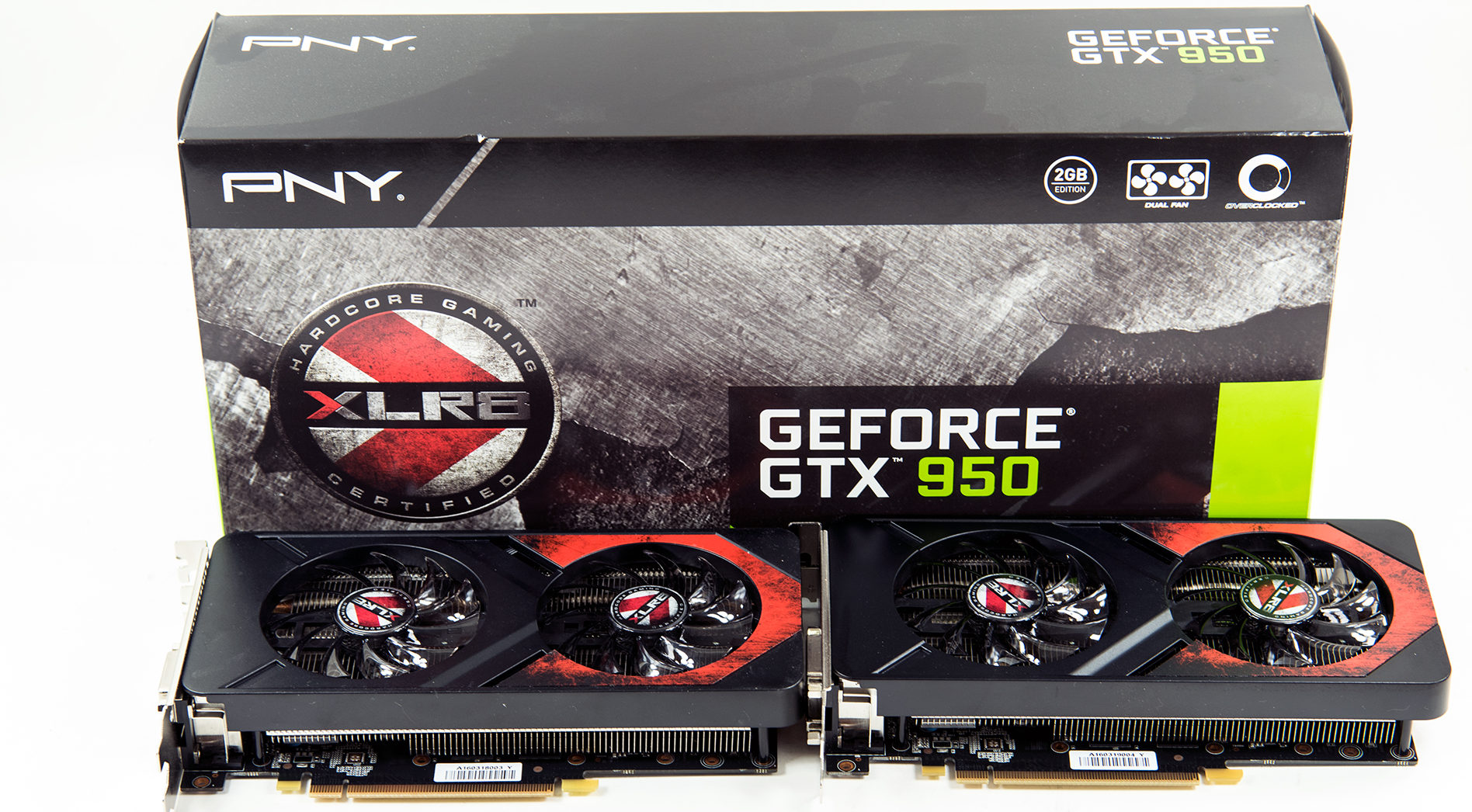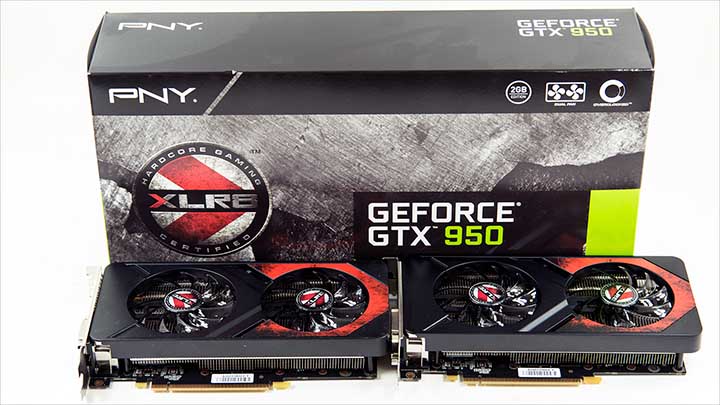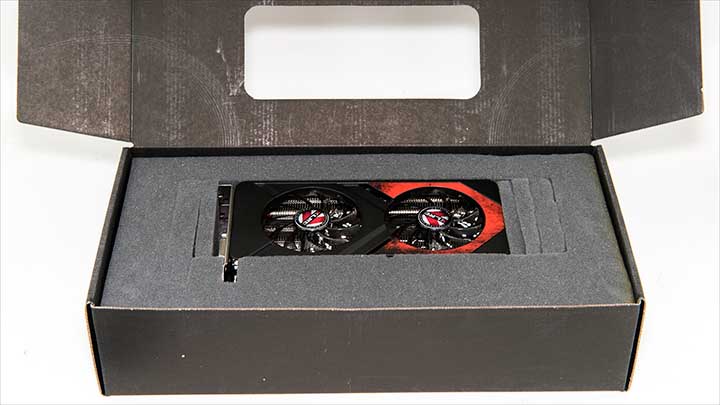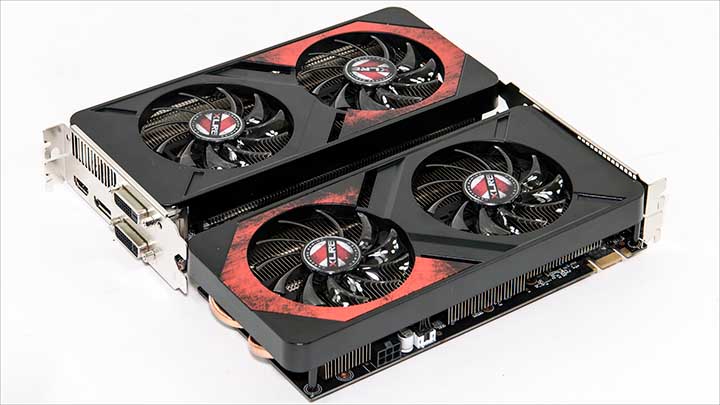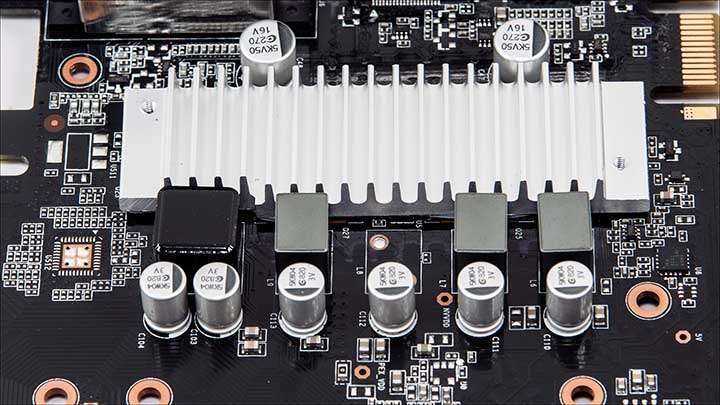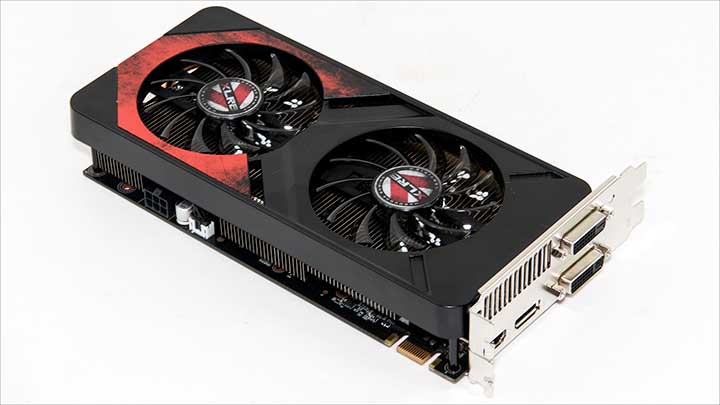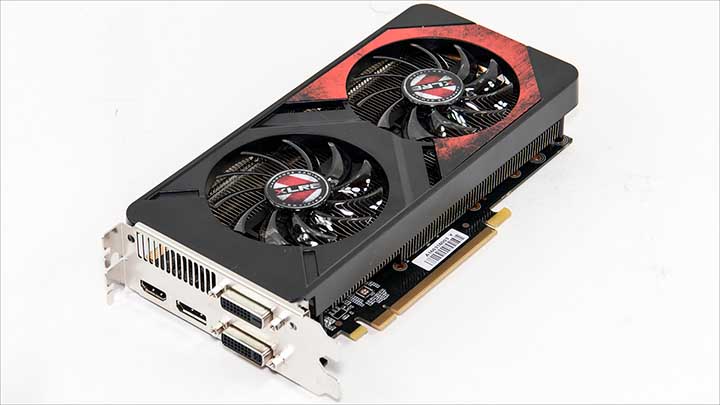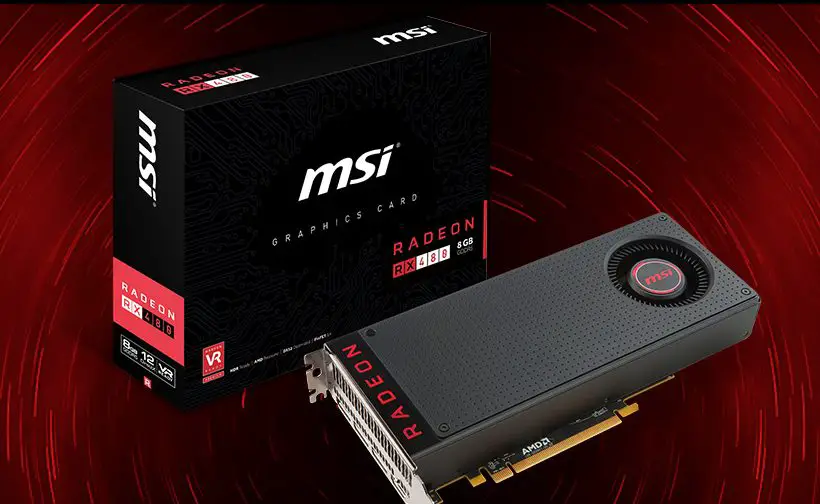The shipping container that houses these new GeForce GTX 950 cards are exactly like the ones the GeForce GTX 960 Gaming OC cards come in. That is to say they are attractive, have plenty of information on the back, and are generally very good. The only issues is it so close the 960’s that it is easy to mix the two models up!
On the positive side, the internal packaging is also just like the exterior: superior to all previous PNY video cards. As you can see the GeForce GTX 950 Gaming OC 2GB comes nestled in a rather impressive amount of form-fitting foam. This amount of protection means that even if you drop the box the card will survive. Honestly, you could probably drop this box out a second story window and the card would probably survive!
The accessories are also the same as the Gaming OC ‘960. That is to say PNY includes a single 6pin PCI-e adapter, a single digital to analog port adapter, a quick start guide, and a CD with the necessary drivers. Overall this covers all the bases nicely and we have little issues with PNY not including more than this.
As you can see this resemblance to the GeForce GTX 960 Gaming OC continues past just the shipping container, so much so that it appears that both uses the same cooler with the same fascia. This to us is a good thing as the Gaming OC GeForce GTX 960 came with a rather impressive custom heatsink and fan design… and considering the GeForce GTX 950 comes with an even cooling running core this does point towards very good things on the overclocking front.
To be more precise this custom cooler design consists of two large heatpipes, copious amounts of aluminum cooling fins and two fans to keep it cool. Put another way this heatsink and fan combination is overkill for this level video card and we are amazed to see that PNY has (re)used this design on a cheaper model! The only minor issue is that does make this ‘950 a lot longer than some other models – so much so we would not want to try and place this in a small m-ITX case.
The only minor issue is the black fascia covering is plastic, but given the lowering asking price of this GeForce GTX 950 model we have a lot fewer issues with this than on the 960 version.
This lower price point is also why we are not overly disappointed with the PNY GeForce GTX 950 Gaming OC not coming with a backplate.
On the positive side even though this is a less expensive model PNY has included the same red LED equipped fans. These fans do make for a rather attractive looking system, especially when paired with a LED equipped motherboard such as ASUS X99 STRIX Gaming.
With the heatsink removed we can see that the PCB is also basically the same as what the GeForce GTX Gaming OC uses. That is to say a full length PCB that comes with its own custom VRM, VRM heatsink, and makes full use of the dual fan setup.
Equally interesting is the Gaming OC GeForce GTX 950 uses a 3 phase design for its power delivery subsystem… just like the 960…. right down to the ‘missing’ fourth phase. Considering it was not a limiting factor with the much higher TDP 960 core we doubt this will be a problem with this 75 watt TDP model.
This combination of lower powered core with an efficient power subsystem is why this model only has a single 6-pin power connector. Of course, at stock settings this model could almost draw enough power from the PCIe slot to not even need a 6pin connector… especially if PNY had pulled an ‘AMD’ and gone above spec. Since they did not this 6-pin connector will provide way more than enough power to even heavily overclocked versions of this model.
As to the factory overclock this model comes with a nearly 13% overclock on the GM206 core, and better still, a 9.1% overclock on the RAM. This is rather impressive given the fact that this version of the ‘206 core was never known for its overclocking ability. After all this class card of cards is more entry level / 1080P resolution cards meant for more casual gaming.
The rear ports on this card are also the exact same as the 960 version. This means XLR8 OC Gaming comes with the two DVI-D, and one (full-size) HDMI, as well as one (full-size) DP ports. This covers all the bases nicely and does so without needing adapters. Equally important due to the layout there is plenty of rear ventilation slits so some of hot air should still exhaust out the back of the case – even though this card makes use of a custom dual downdraft cooler instead of a reference blower design.
